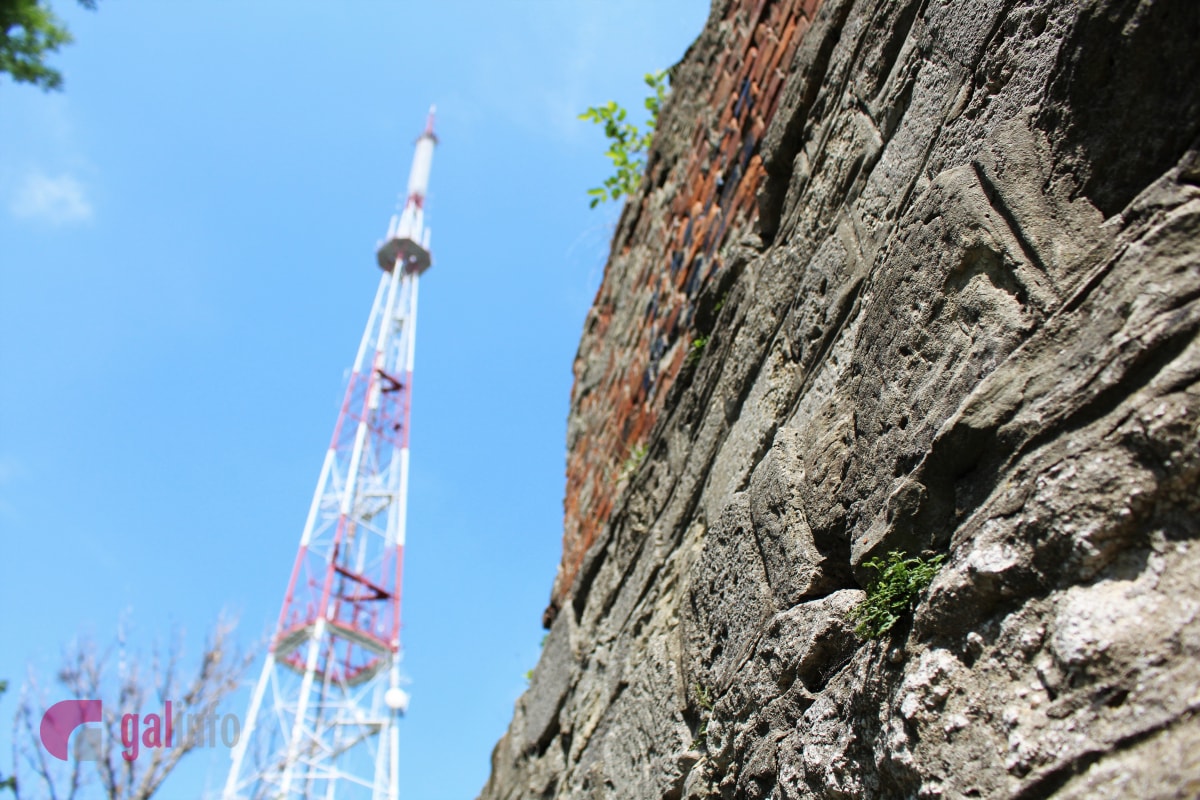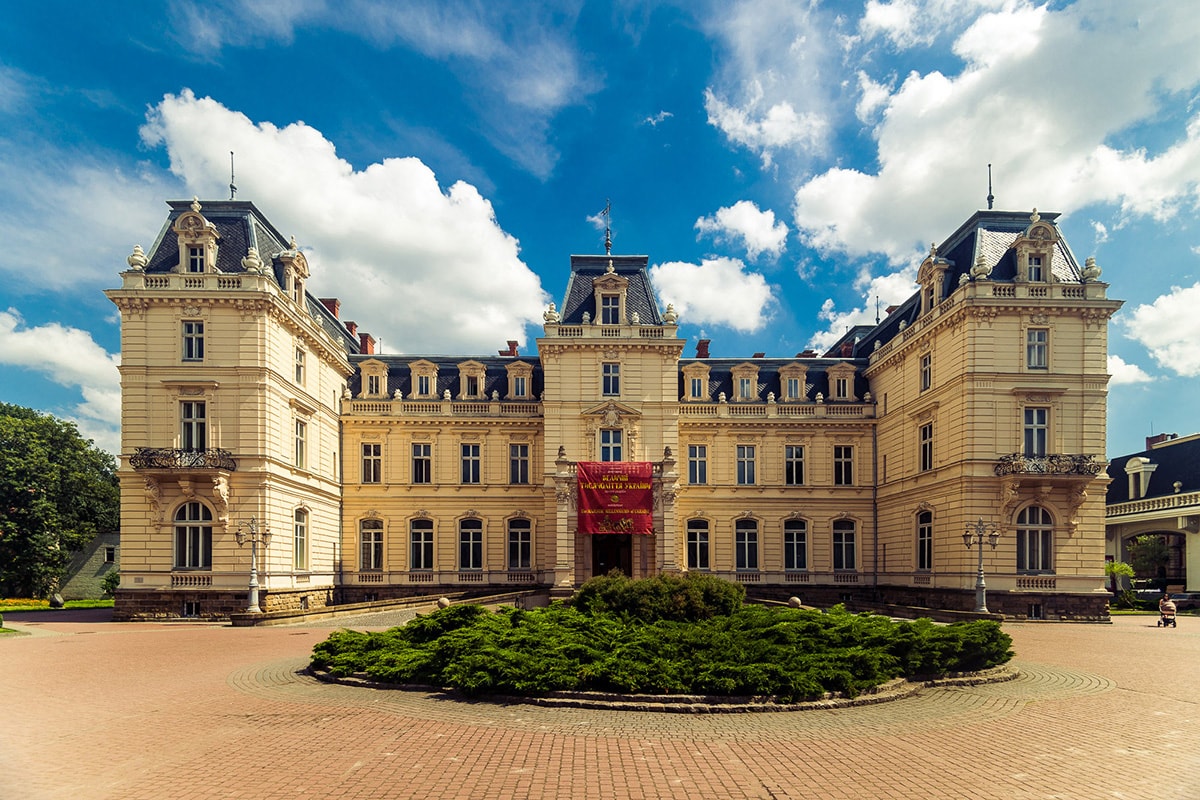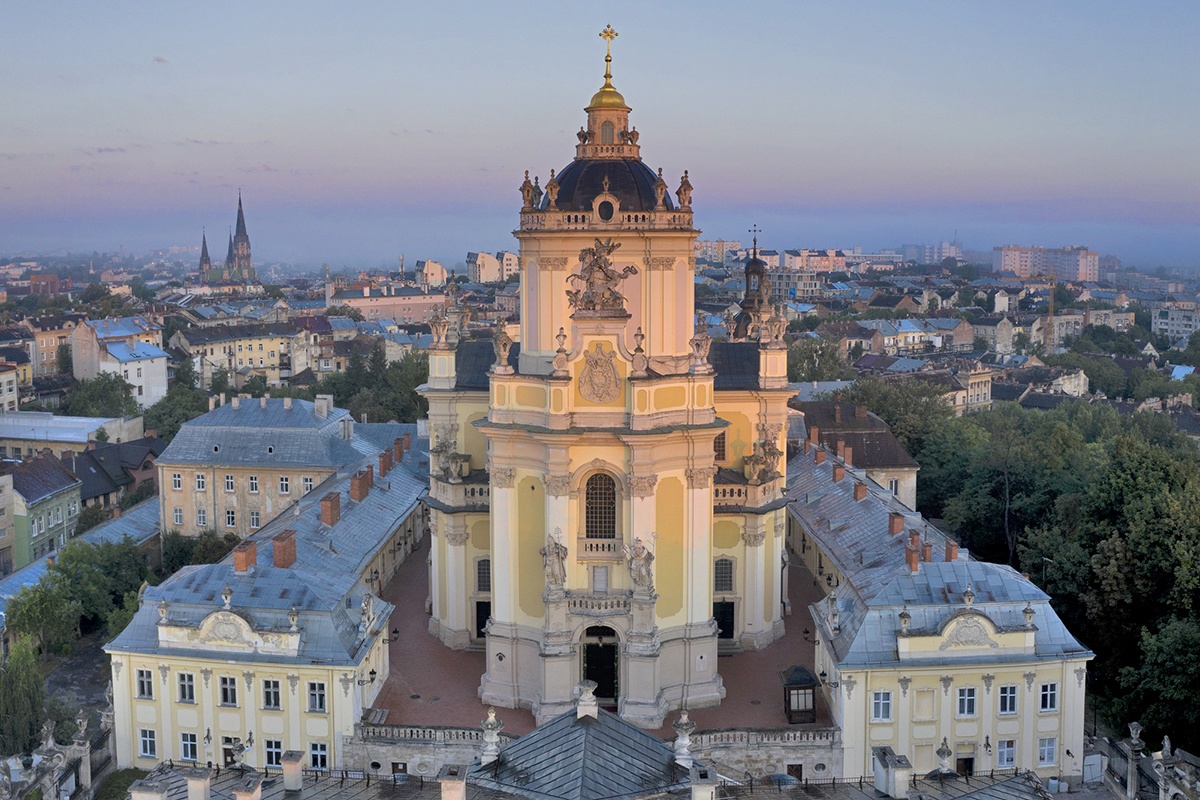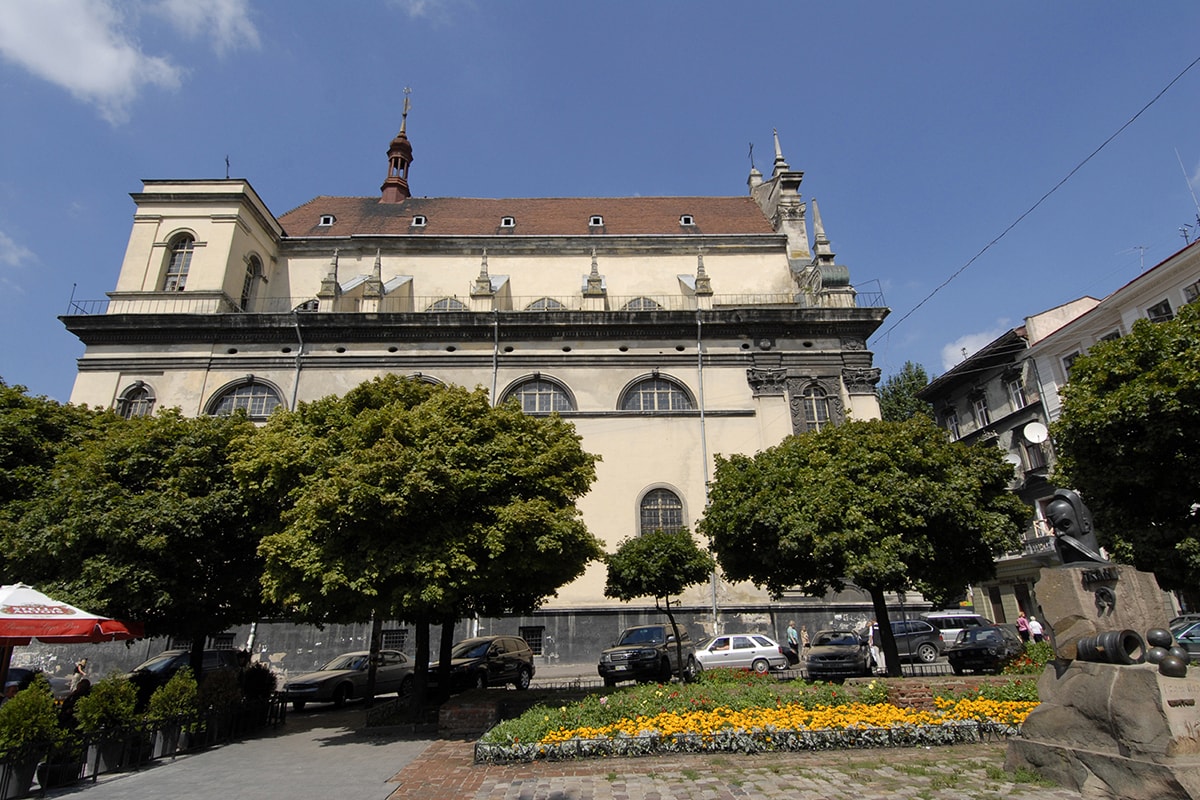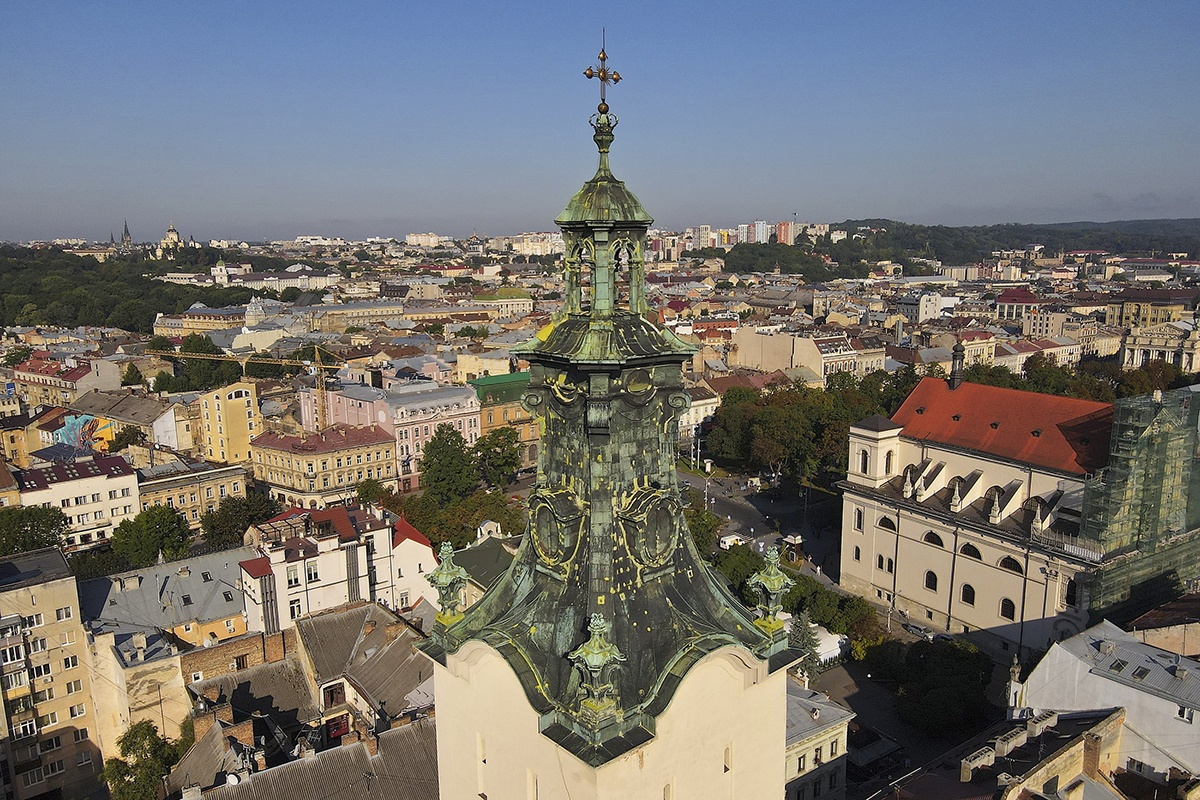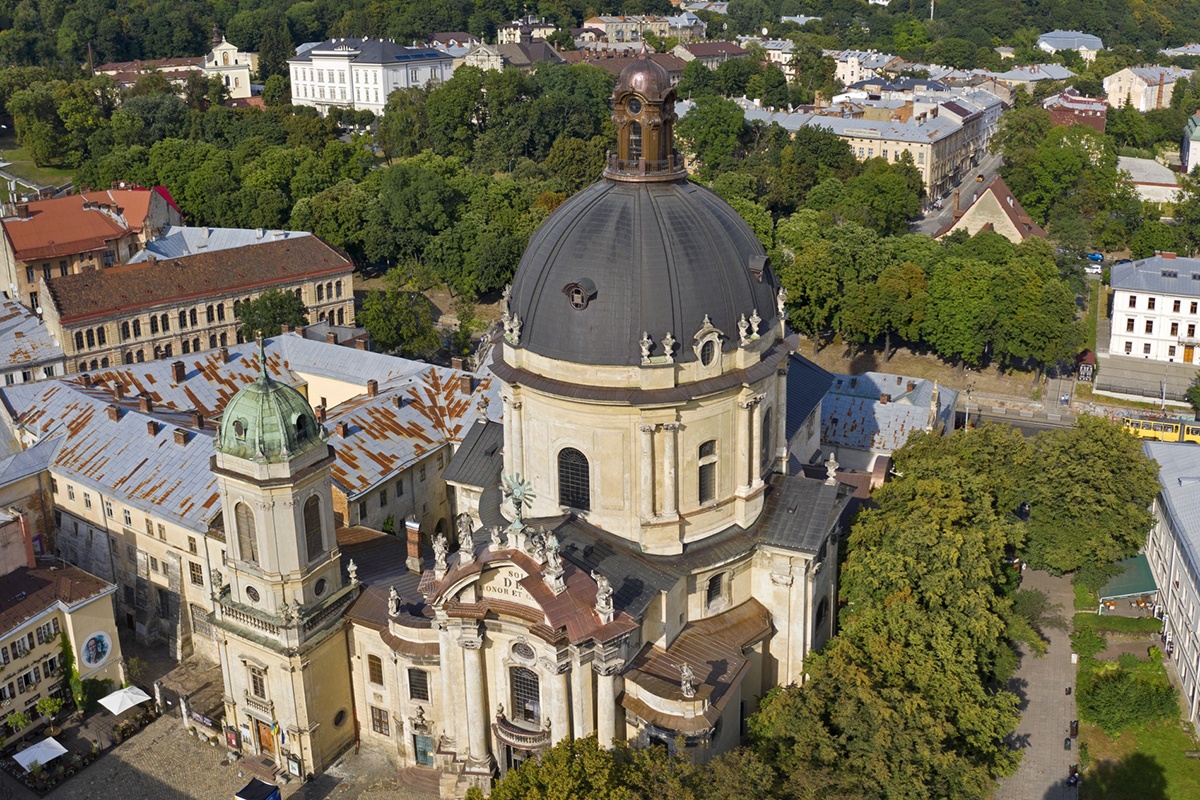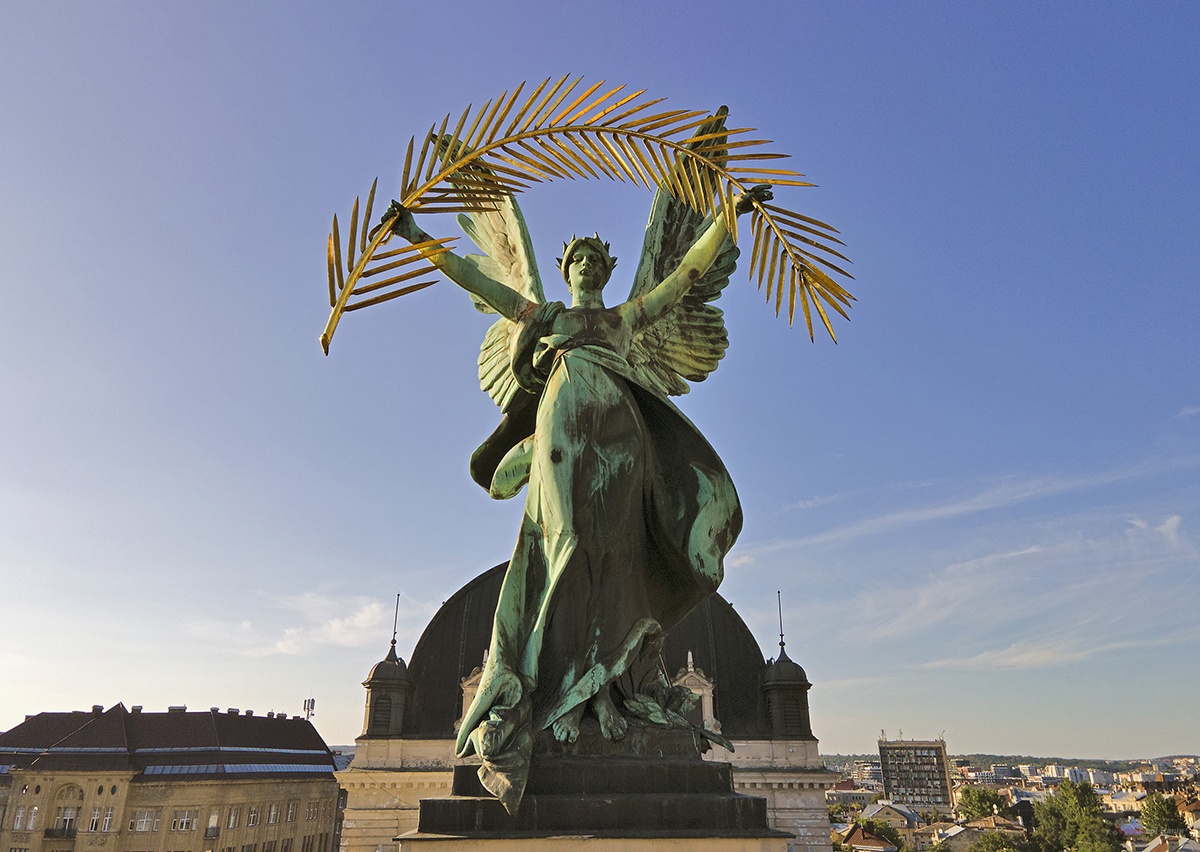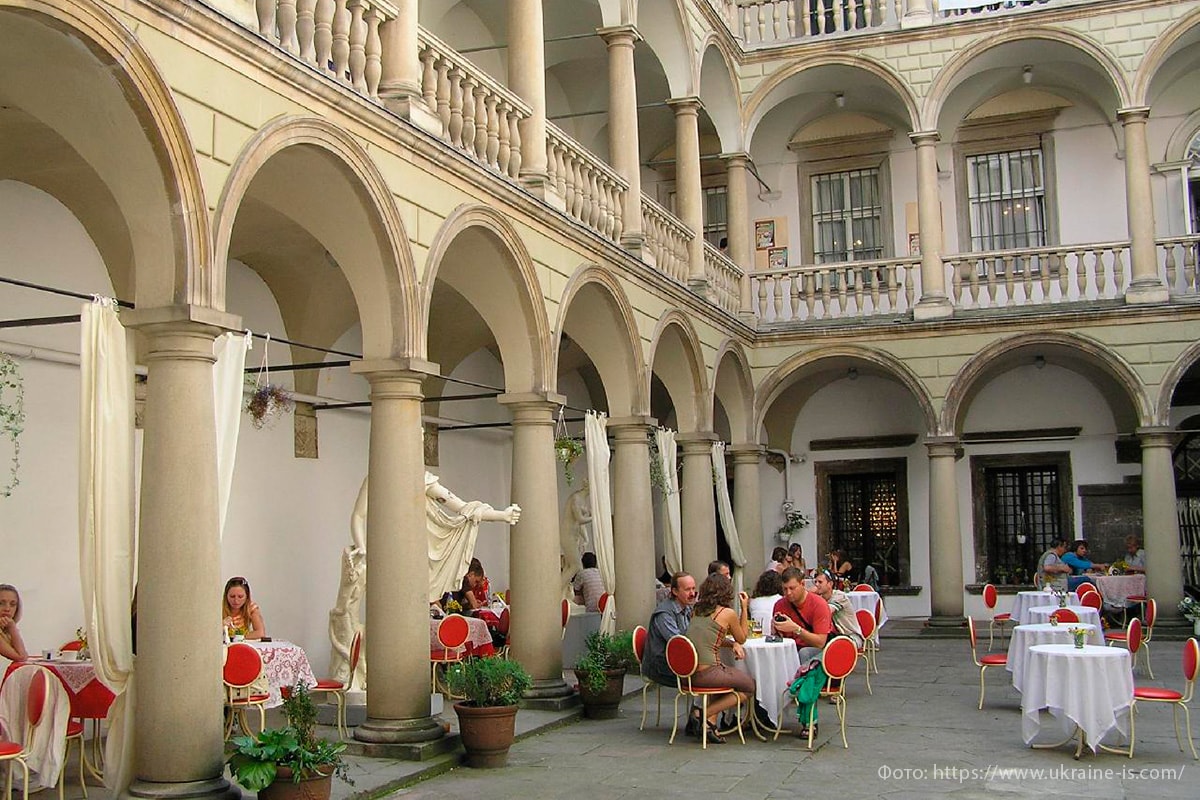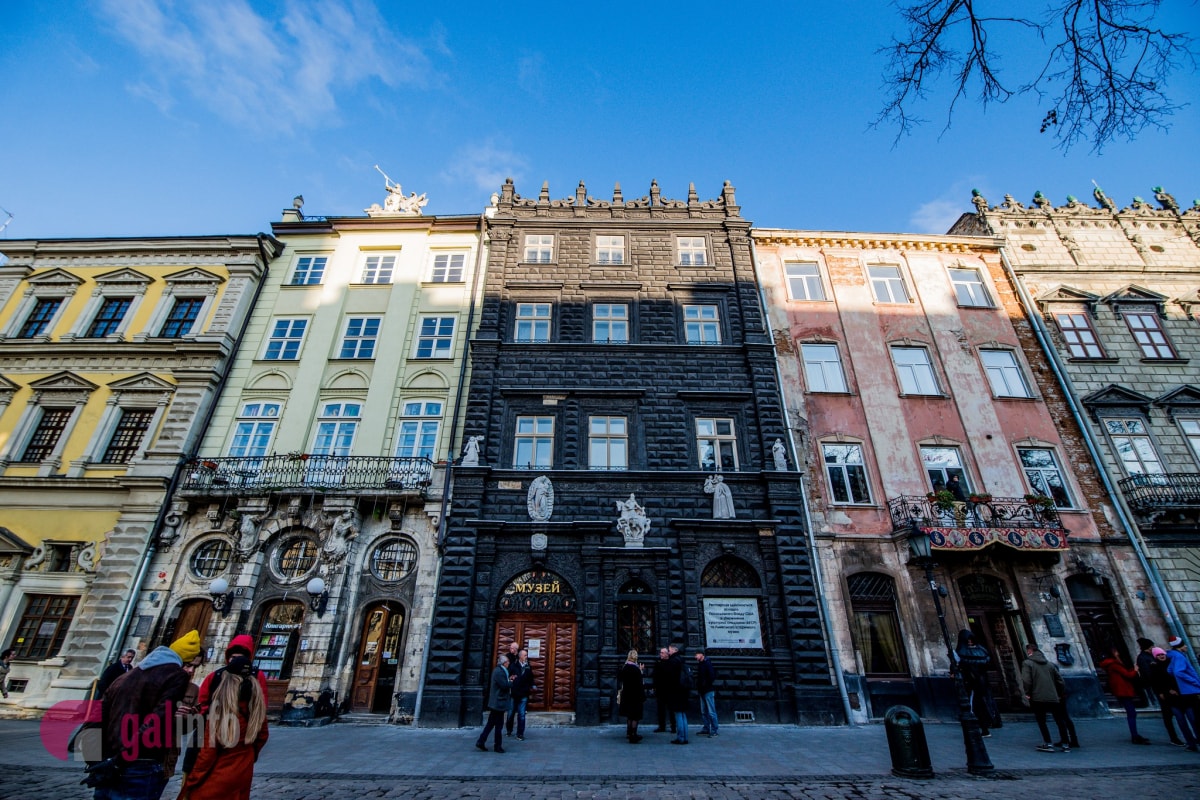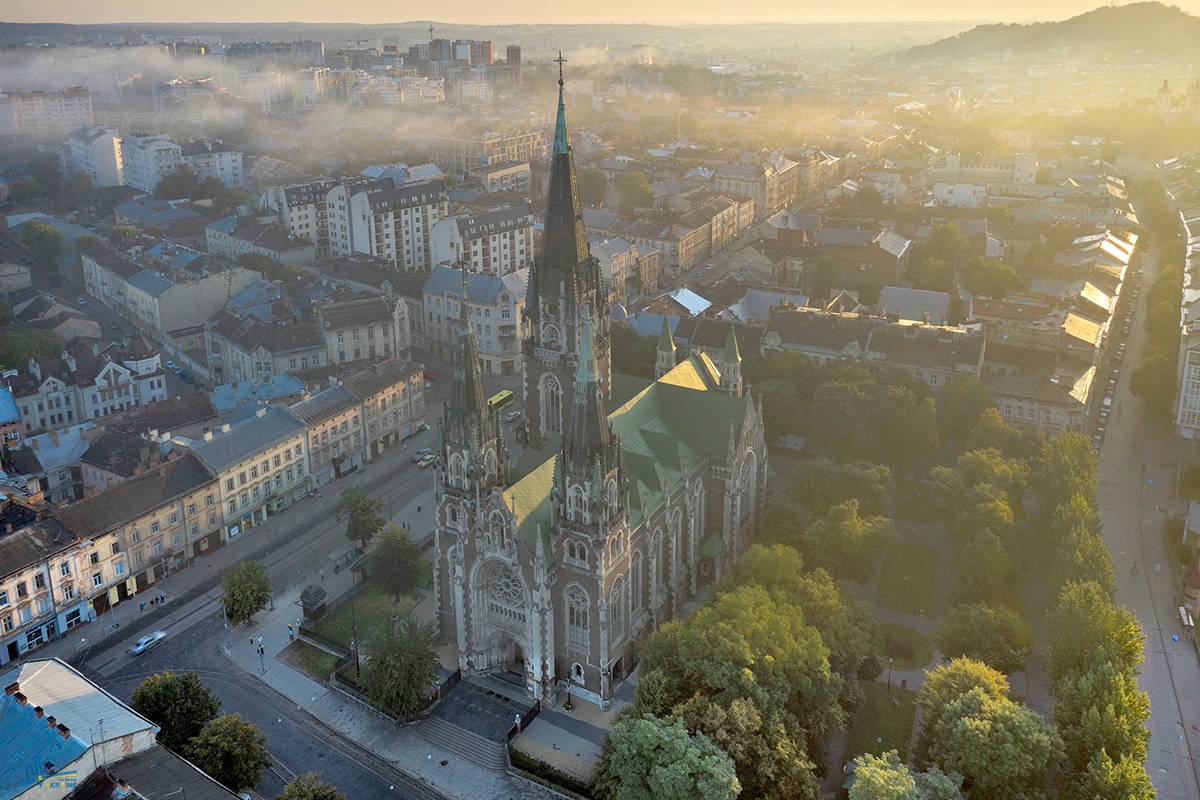
Armenian Cathedral of the Assumption of the Blessed Virgin – an architectural monument of national importance in Lviv, a UNESCO World Heritage Site; the only church of the Armenian Apostolic Church in Western Ukraine.
Its oldest part was built in 1363 in the Armenian-Oriental style by the architect Doring. In 1437 a Renaissance arcade was added to it. The middle part of the church – Baroque – was completed in 1630. The western – the newest – in 1908. Above the entrance to the courtyard rises a tower built in 1571 under the direction of architect Peter Krasovsky.
The whole Armenian street became an ensemble: the same old planning, houses from the XV to the XIX century with the preservation of Gothic, Renaissance and Empire elements. Thus, in the center of Lviv there was a wonderful architectural nook, as if transferred from the Caucasus. It consists of a cathedral in the middle of a cemetery lined with old tombstones, a monastery building of Armenian Benedictine nuns with a courtyard, an archpastoral palace, and a house for a priest.
In 1925, during the restoration of the Armenian Church, picturesque frescoes of the end of the 14th century were found in a window niche: the figure of Jesus, St. John the Theologian in the Byzantine style. On the walls of the temple are preserved frescoes of later times, as well as bas-reliefs of clergy.
Most of the paintings in the Armenian Church belong to the Polish artist Jan Henryk Rosen, who worked from 1926 to 1929. He later made perhaps the most beautiful paintings in the private chapel of the Pope in the Vatican – in the chapel of Pius XI.
After the Second World War, the ensemble of the Armenian Church was not used for the spiritual needs of the faithful. The church building has become a repository of museum antiquities. In the 90s of the twentieth century believing Armenians of Lviv revived the Armenian Apostolic Church, which is still active today

